I would like to use a QListView with custom widgets that contain QSlider and QSpinBox widgets. I succeeded in creating the QListView with a new custom item delegate that displays the custom widgets but the mouse events are not propagated to the custom widgets.
It's not possible to slide the QSlider or change the value of the QSpinBox. The user can not interact with the items.
I'm new to Qt and I guess it's because the custom widgets are not children of the list view. I tried to associate the widgets to the list view (in the item delegate constructor) but that does not work.
I also tried to propagate the item delegate's events to the widgets using the QWidget::event() functions, but that does not work.
Does any one have an idea ?
Here is the custom widget :

Here is the QListView displaying the custom widget :

Here is the code of my custom item delegate :
#include <QPainter>
#include "layeritemwidgetdelegate.h"
#include "../../libs/debug/debug.h"
LayerItemWidgetDelegate::LayerItemWidgetDelegate( QObject *ptParent ) :
QItemDelegate( ptParent ),
m_ptItemWidget( new LayerItemWidget() )
{
}
LayerItemWidgetDelegate::~LayerItemWidgetDelegate()
{
delete m_ptItemWidget;
}
void LayerItemWidgetDelegate::paint( QPainter *ptPainter, const QStyleOptionViewItem &tOption, const QModelIndex &tIndex ) const
{
QPalette tPalette;
// Resize the item widget
m_ptItemWidget->resize( tOption.rect.size() );
// Change the background color of the widget if it is selected.
if( QStyle::State_Selected == ( tOption.state & QStyle::State_Selected ) )
tPalette.setBrush( QPalette::Window, QBrush( QColor( Qt::lightGray ) ) );
else
tPalette.setBrush( QPalette::Window, QBrush( QColor( Qt::transparent ) ) );
m_ptItemWidget->setPalette( tPalette );
// Paint the widget
ptPainter->save();
ptPainter->translate( tOption.rect.topLeft() );
m_ptItemWidget->render( ptPainter );
ptPainter->restore();
}
QSize LayerItemWidgetDelegate::sizeHint(const QStyleOptionViewItem &tOption, const QModelIndex &tIndex) const
{
Q_UNUSED( tOption )
Q_UNUSED( tIndex )
return QSize( m_ptItemWidget->minimumWidth(), m_ptItemWidget->height() );
}
bool LayerItemWidgetDelegate::editorEvent(QEvent *event, QAbstractItemModel *model, const QStyleOptionViewItem &option, const QModelIndex &index)
{
m_ptItemWidget->propagateEvent(event);
m_ptItemWidget->setEnabled( true );
DEBUG_MESSAGE( "EVENT" );
}